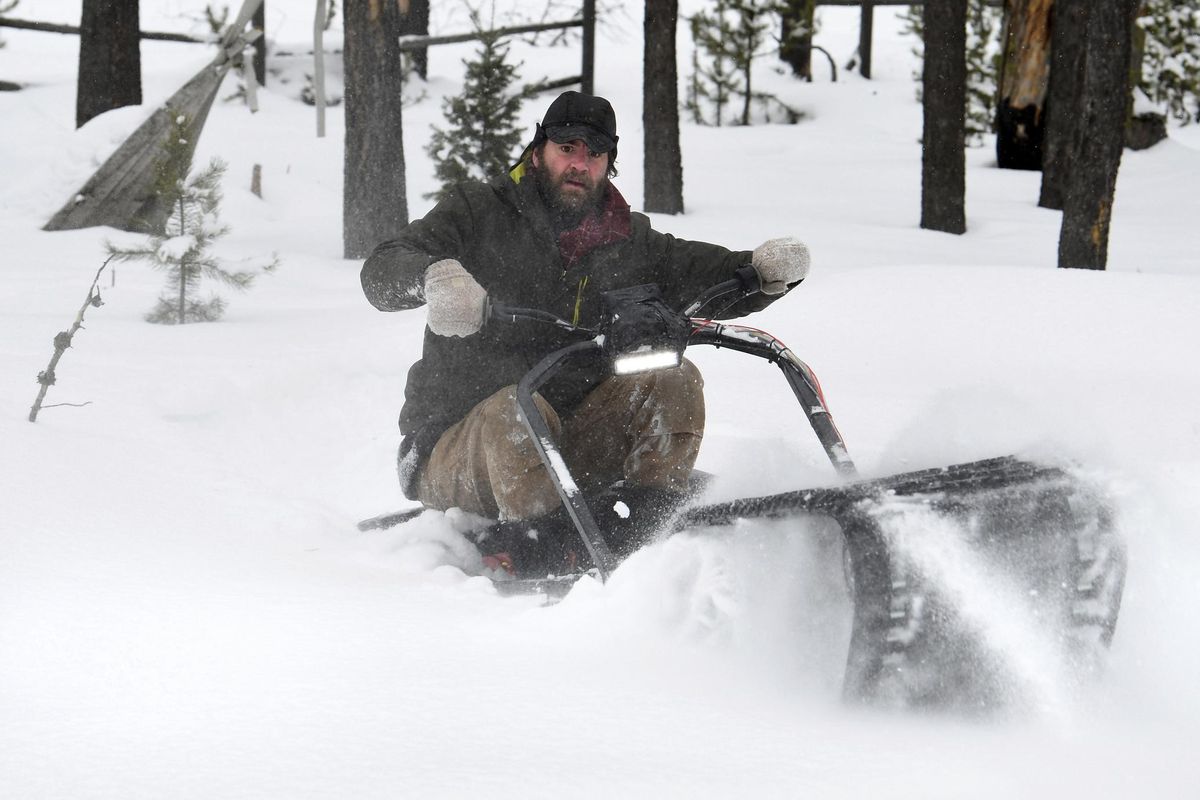Silent, speedy Snow Track may revolutionize winter grooming

SEELEY LAKE, Mont. – Better hope you see August Lockwood coming, because you sure won’t hear him riding behind his mutant snow beast ahead of snow bikes that are likely to follow.
Somewhere between a dogsled without the barking dogs and Anakin Skywalker’s pod-racer without the throbbing engines, Lockwood’s “snow track” out-performs its underwhelming name.
He packed a cart with 990 rechargeable AA batteries and an 18-horsepower electric motor, wrapped a snowmobile tread around it, and added a hitch.
“I designed it to create a trail for fat-tire biking,” Lockwood said. “In the winter, I do a lot of grooming for snowmobiles and cross-country skiers, and this does the same thing as my $50,000 PistenBully.”
Except it draws a 2-foot-wide path instead of the 9-foot swath preferred by snowmobilers and skate-skiers. That’s ideal for fat-tire riders, who chase steeper grades and tighter corners.
Lockwood hooks a tub-sled behind his machine. The snow track all but disappears in the fresh powder ahead of him, occasionally bursting through a drift like a dolphin surfing a wave.
Winter bikers got to experience Lockwood’s handiwork at the Marshall Mountain Fat Bike Race. MTB Missoula board member Alex Gallegos said the bike-sized grooming made an impression.
“For a fat-tire bike to ride through the snow, the surface needs to be relatively firm and packed,” Gallegos said. “They don’t pedal through deep powder, but they will float on top of a firm snow trail. A regular mountain bike tire would sink right in. This gives an opportunity for fat bikes to go where they don’t interfere with classic cross-country skiing trails.”
Lockwood also grooms several miles of trail in the Twin Creeks area northeast of Missoula for both bikers and skiers.
The snow track’s sound, or lack of it, may be its most remarkable feature. Compared to the rumble and exhaust of a typical snowmobile, Lockwood’s motor gets drowned out by the creaks and groans of the plastic sled it pulls.
Electric motors also benefit from much greater efficiency than comparable gas-powered engines. Internal combustion engines explode fuel in a cylinder, which pushes a piston back and forth. That energy has to be transferred to a rotary motion to turn a wheel. They work best at the middle of their power range, which is why cars need gear boxes to adapt their force to start a stationary car or keep it running at high speed.
In contrast, an electric motor spins a magnetic field. So its energy goes directly to twisting a driveshaft, and all its torque comes to bear the instant you turn it on. That makes it much better than a gas engine at going from full stop to fast motion.
A rancher saw applications of the electric machine for winter feeding cattle. Ice fishermen see it’s potential.
“I’ve got about three months of 18-hour days invested in this,” Lockwood said. “This one would cost about $10,000 to make. Batteries are what’s killing the industry right now. But when they come around, in 10 years I can say I’ve been doing this for a while.”